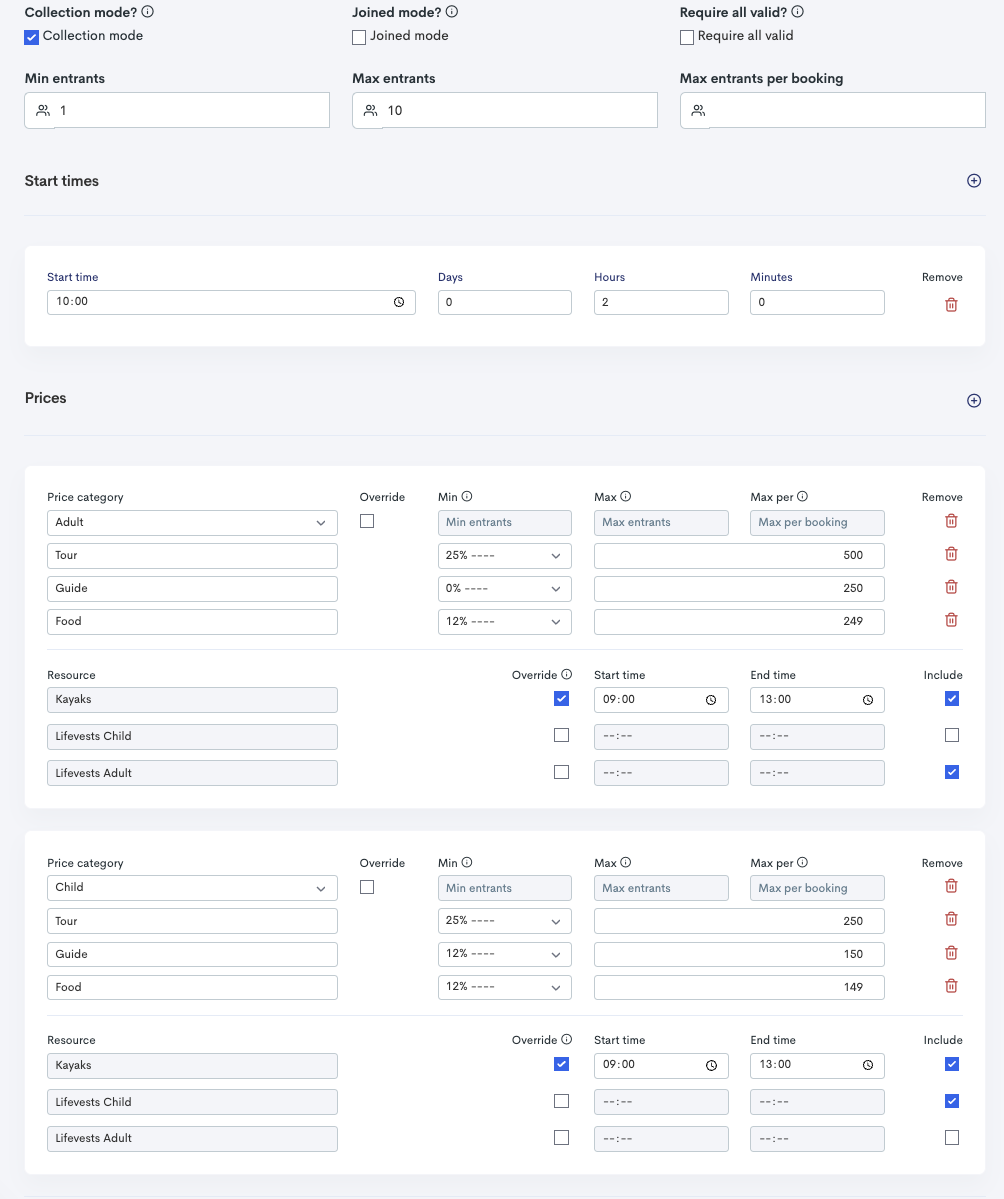Collection Mode
Collection mode enables flexible management of ticket types on a tour, including options to split resources by ticket type and set specific restrictions for each ticket, such as minimum or maximum entrants per ticket type on a given tour.
The Different Modes
Mode | Description |
|---|---|
Collection mode | Enables collection mode. |
Joined mode | Allows you to set global restrictions (minimum and maximum number of entrants for a tour, which results in restrictions can be met through a combination of ticket types. |
Require all valid | Requires every ticket to match the minimum entrants in the global settings to be met. |
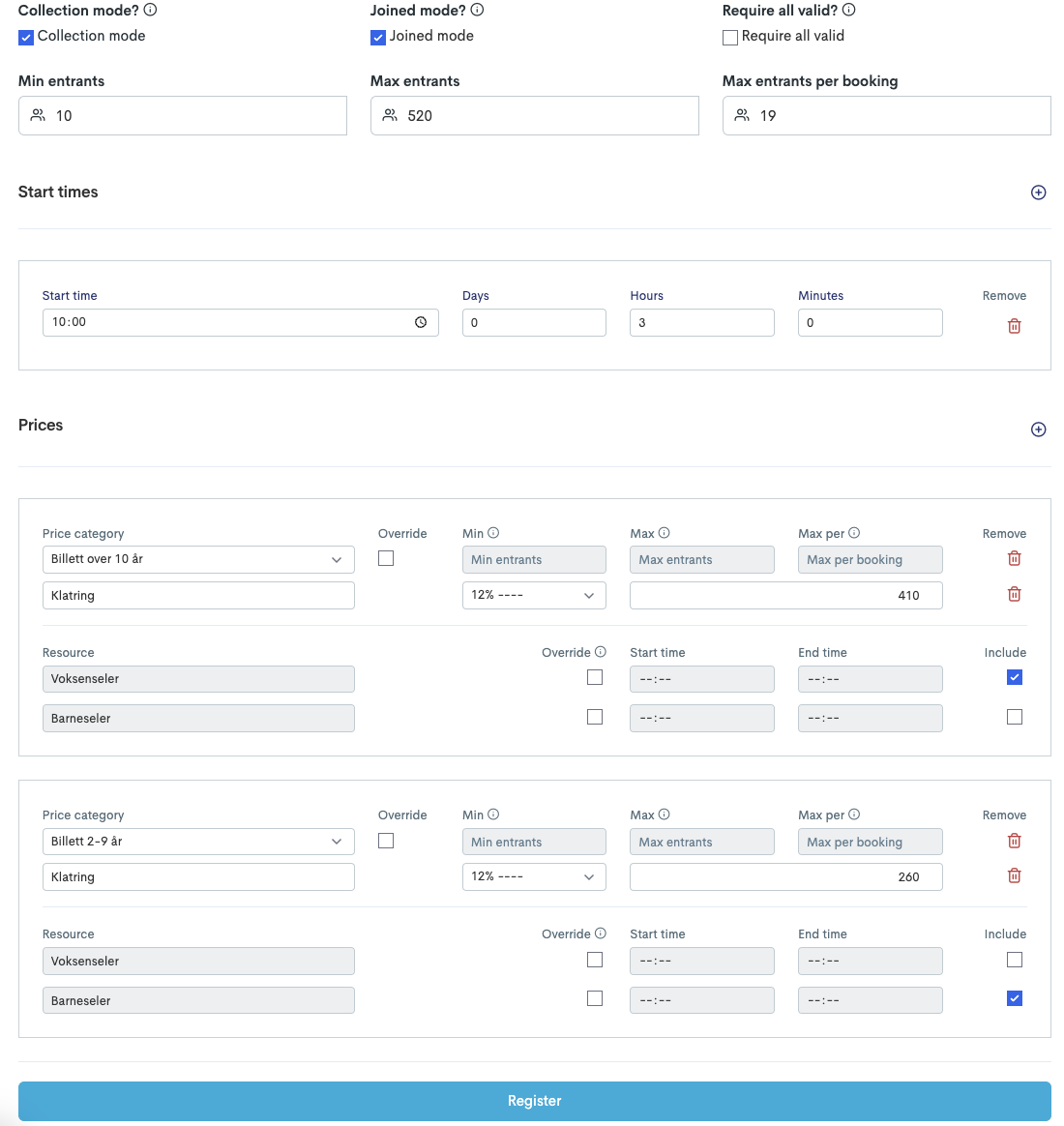
Joined mode
Joined mode allows you to set global restrictions (minimum and maximum number of entrants for a tour, instead of applying restrictions to individual ticket types. This means that restrictions can be met through a combination of ticket types.
💡Example
A climbing park wants to sell group tickets between (and including) 10 and 19 tickets, but they want those restrictions to be met by combining the two tickets options on this tour. The Joined Mode allows the end-customer to buy 8 adult tickets (shown as Billett over 10år in the picture) and 2 Child tickets (shown as Billett 2-9år). What is possible and not possible to buy with the setup below:
![]() 10 Adult tickets.
10 Adult tickets.![]() 10 Child tickets.
10 Child tickets.![]() 5 adults, 5 children → Any combinations of tickets from 10 to 19.
5 adults, 5 children → Any combinations of tickets from 10 to 19.
❌ 10 adults, 10 children → Exceeds max entrants limit.

Require all valid
Require all valid requires every ticket to match the minimum entrants in the global settings to be met.
When both Joined Mode and Require all valid modes are enabled, you can set a global minimum entrants requirement, along with specific requirements for one or more ticket types.
💡Example 1
You want to sell a kayak trip offering adult and child tickets. However, you do not want any children to buy tickets alone (an adult ticket has to be purchased in the same order). What is possible and not possible to buy with the setup below:
![]() 1 Adult ticket.
1 Adult ticket.
❌ 1 Child ticket.
❌ 5 Child tickets.![]() 1 Adult ticket and 1 Child ticket.
1 Adult ticket and 1 Child ticket.![]() 1 Adult ticket and 10 Child tickets.
1 Adult ticket and 10 Child tickets.![]() 10 Adult tickets and 1 Child ticket.
10 Adult tickets and 1 Child ticket.
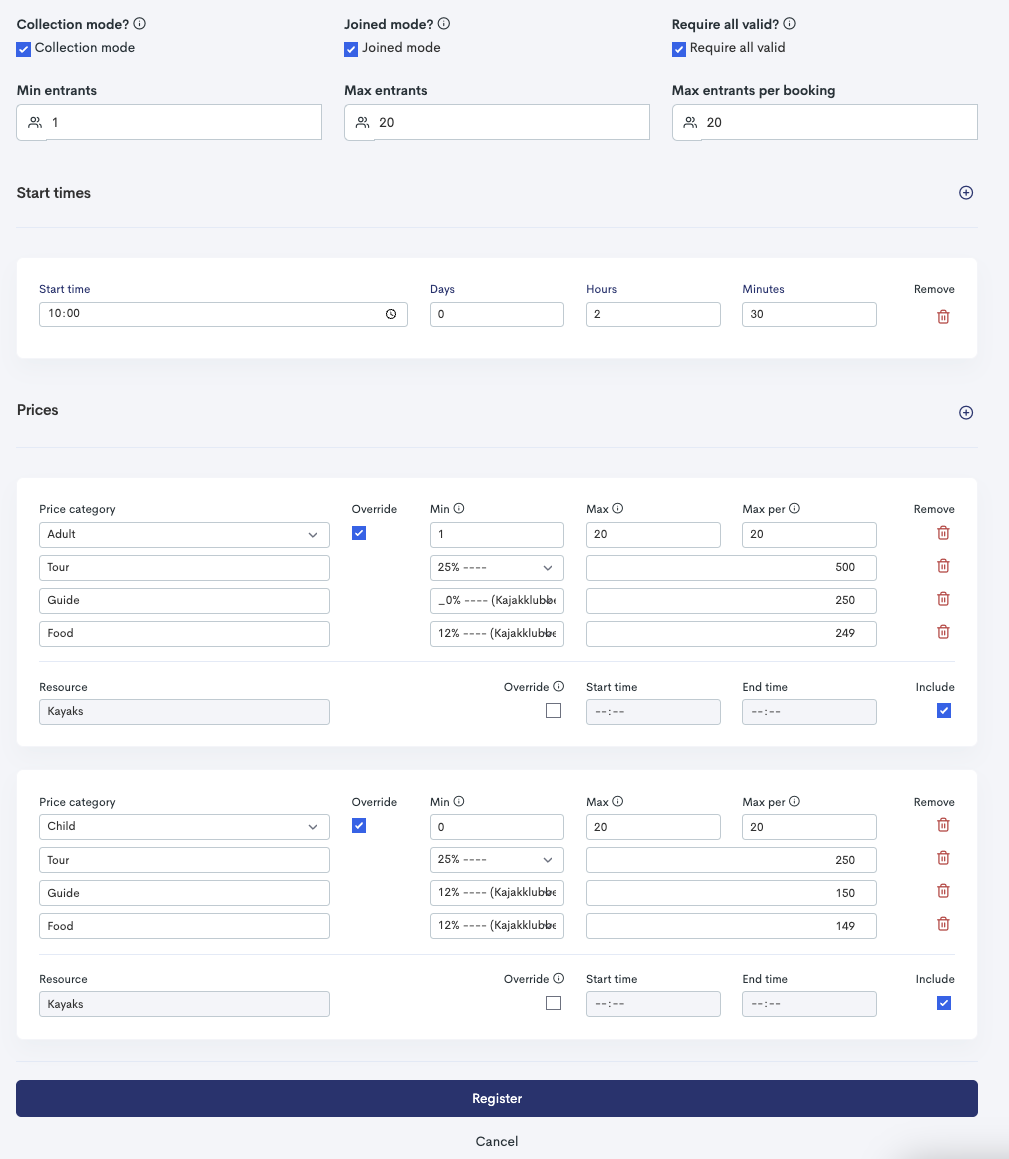
💡Example 2
What if both ticket options are ticked off? For an Escaperoom, a room fee is charged, and additional payment is required per participant. What is possible and not possible to buy with the setup below:
![]() 2 Adult tickets and 1 Escaperoom ticket.
2 Adult tickets and 1 Escaperoom ticket.
❌ 1 Adult ticket and 1 Escaperoom ticket → Minimum required on Adult not met.
❌ 2 Adult tickets → Minimum required on Escaperoom not met.
❌ 5 Adult tickets and 2 Escaperoom tickets → Exceeds maximum required tickets on Escaperoom.
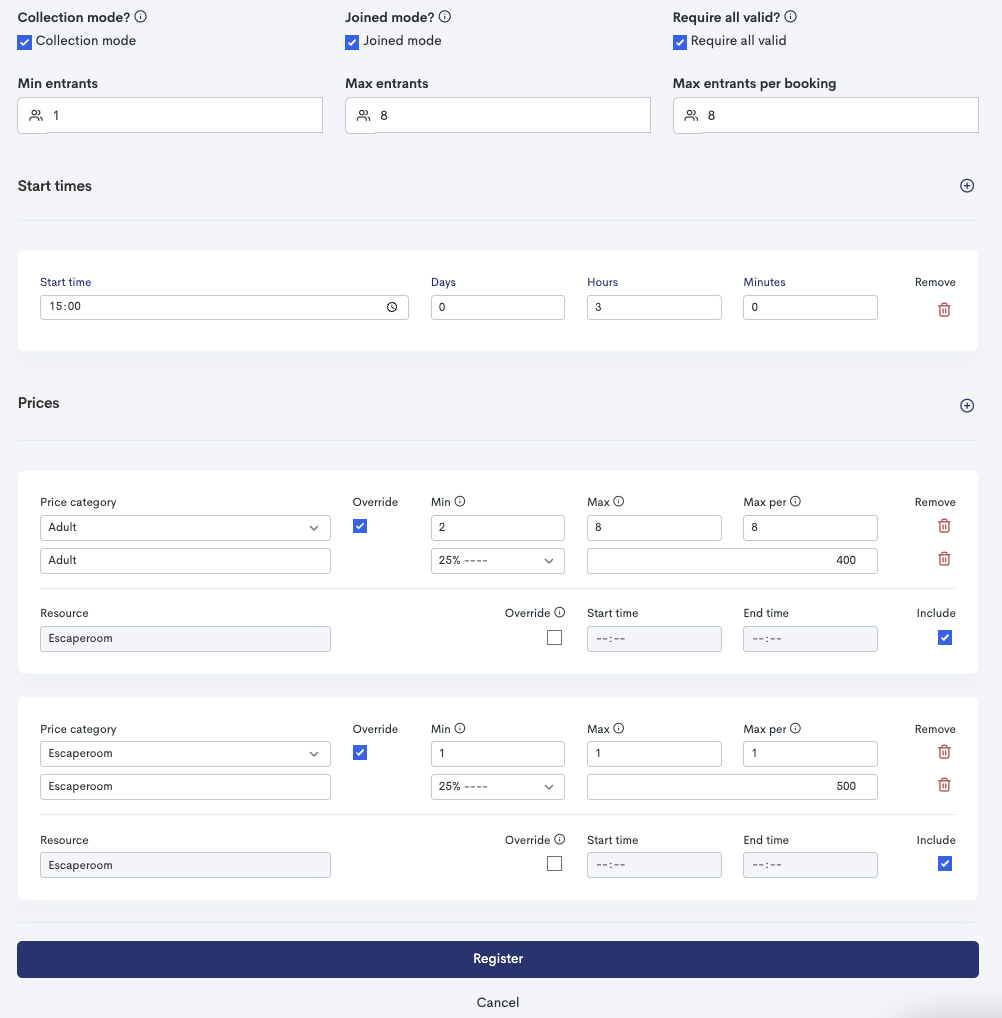
💡Example 3
For a group kayak trip, a minimum of 10 participants is required, with at least 5 adults in each booking. What is possible and not possible to buy with the setup below:
![]() 5 Adult tickets and 5 Child tickets.
5 Adult tickets and 5 Child tickets.![]() 5 Adult tickets and 5 Child tickets.
5 Adult tickets and 5 Child tickets.
❌ 4 Adult tickets and 6 Child tickets.![]() 8 Adult tickets and 2 Child tickets.
8 Adult tickets and 2 Child tickets.![]() 10 Adult tickets.
10 Adult tickets.
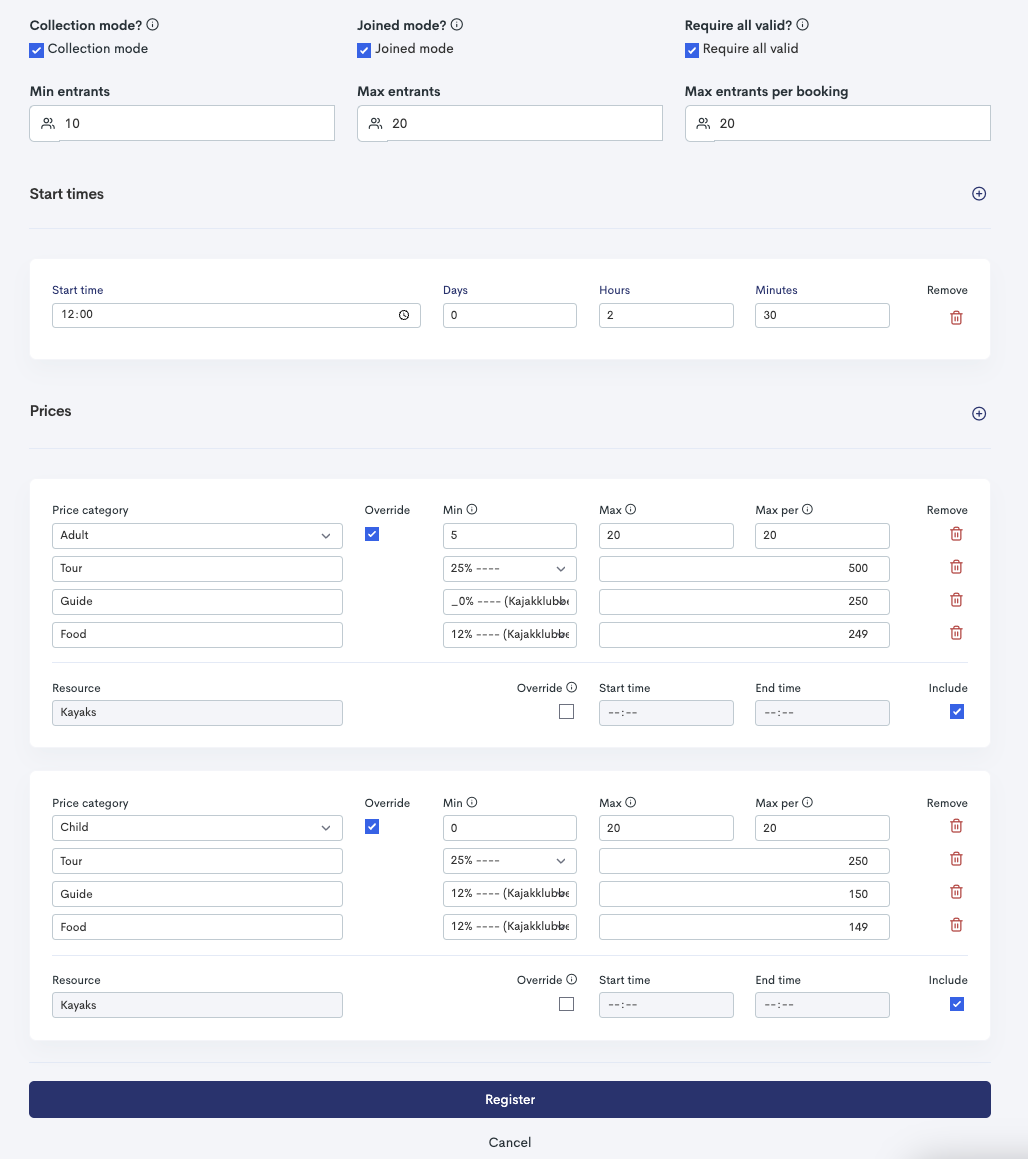
Overriding Entrants Requirements on a Specific Ticket
This setting option allows you to set minimum or maximum entrants on specific tickets within a tour.
💡Example
For a Boat ride to Trollfjorden where it is offered Adult-, Child- and Family tickets, you may require a minimum of 5 Family tickets to be sold if selected. What is possible and not possible to buy with the setup below:
![]() 1 Adult ticket.
1 Adult ticket.![]() 1 Child tickets.
1 Child tickets.
❌ 1 Adult ticket and 1 Family ticket → Minimum required limit on Family ticket is not being met.![]() 5 Family tickets.
5 Family tickets.![]() 5 Adult tickets, 5 Child tickets and 5 Family tickets.
5 Adult tickets, 5 Child tickets and 5 Family tickets.
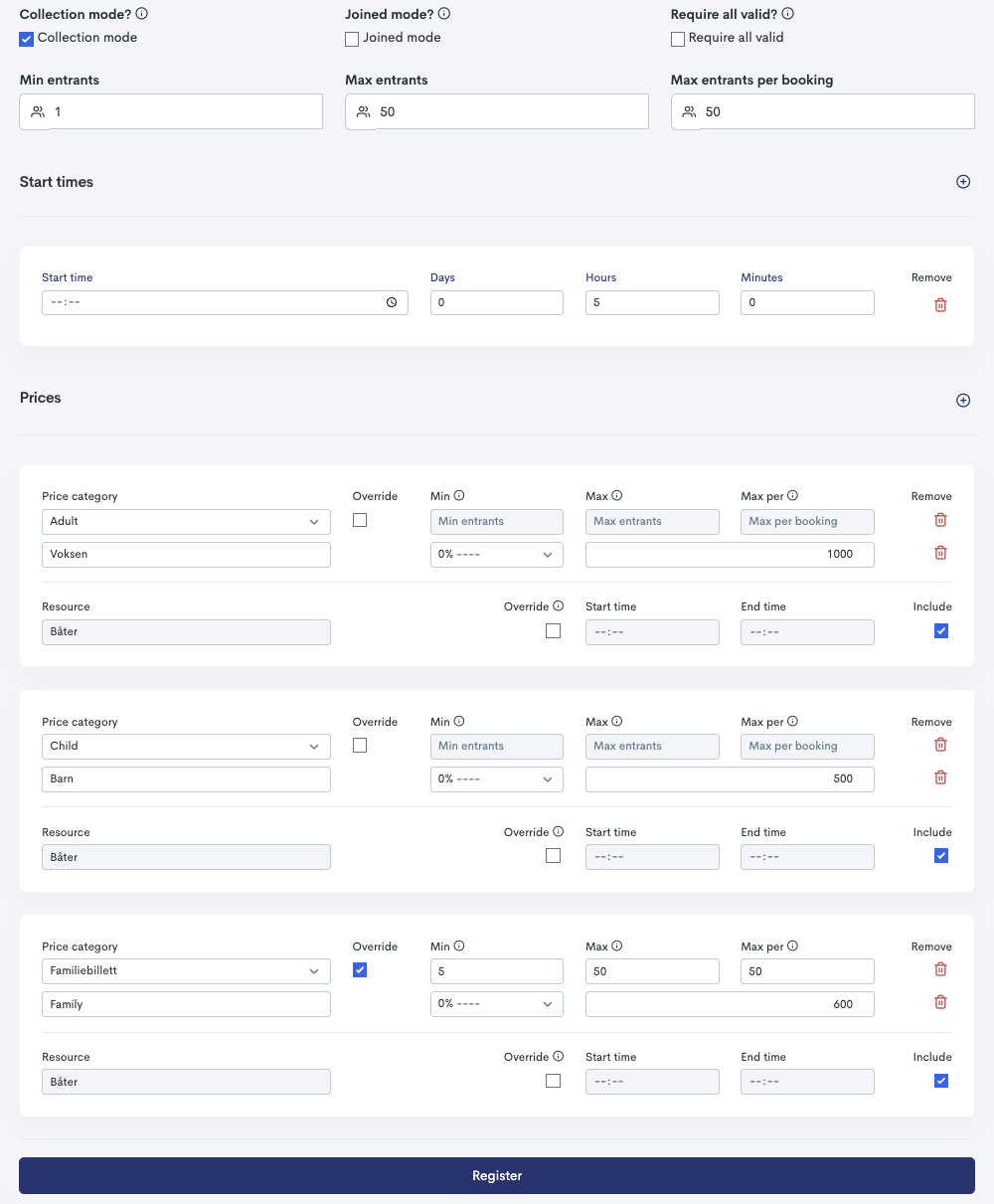
Resources on Ticket Options
With Collection mode, you can allocate resources by ticket type, which then can be shared among different tours/products. This also allows for flexibility in setting resource availability timings.
💡Example
You are selling a kayak trip and have a limited supply of life vests and kayaks (your resources). The life vests are separated into Adult and Child (Lifevests Adult and Lifevests Child), due to different sizes. Whenever an Lifevests Adult ticket is bought in the example below, one entrant of the resource Kayaks and one entrant of the resource Lifevests Adult is being taken.
This could be shared among other tours, meaning if there are no more capacity for the Lifevests Child resource, the ticket option will be closed and no child tickets can be bought. However, the ddult ticket option will still be open.
The timing of the resource Kayaks (which is included in both price options) is also altered to fit the suppliers need. While the tour itself is from 10:00 - 12:00, the Kayaks are in-use (being prepared) from 09:00 - 13:00.
Whats possible and not possible to buy with the setup below:
![]() No restrictions on tickets options here apart from Min entrants: 1 and Max entrants: 10.
No restrictions on tickets options here apart from Min entrants: 1 and Max entrants: 10.
